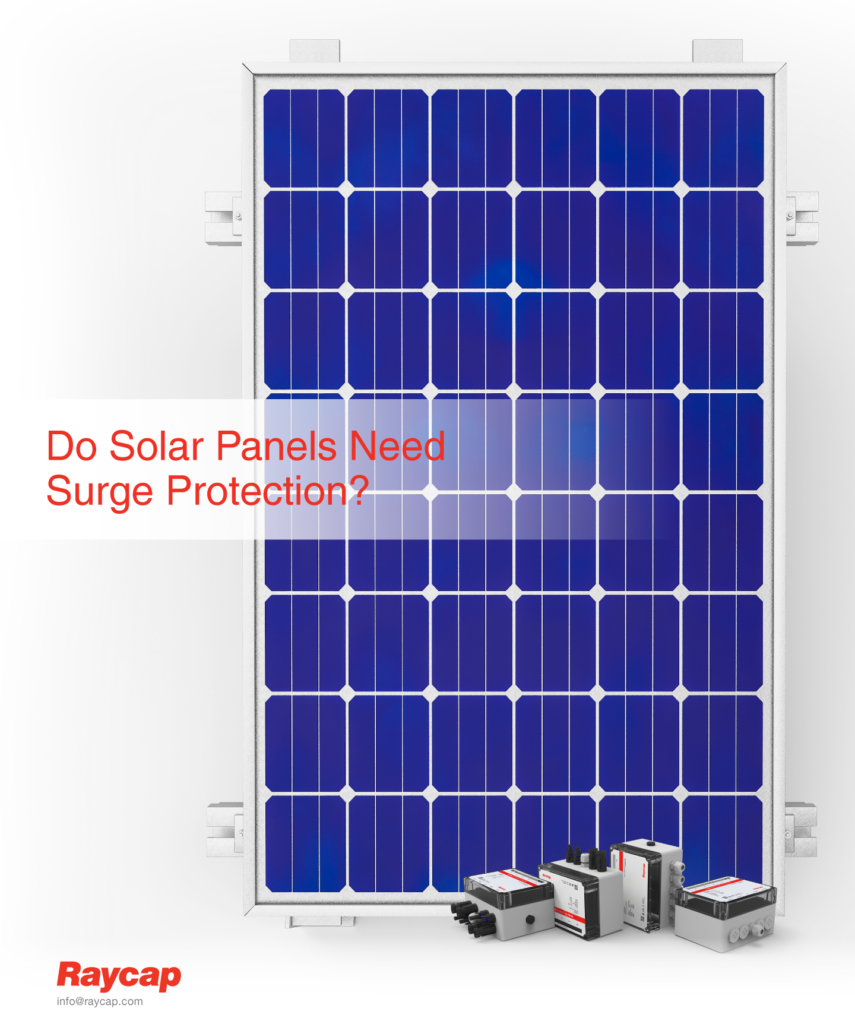Harnessing Solar Energy through Photovoltaic Power Production
Read More: https://www.raycap.com/pv-surge-protection/
Photovoltaic power production (PV power production) is the use of sunlight that ultimately produces electricity as a harnessed product. The photovoltaic aspect of the process involves solar panels positioned in areas which are positioned in areas exposed to ample amounts of sunlight, harnessed by the panel, and used to heat liquid within a sealed system. That liquid flows through the system as pressure builds, ultimately moving past turbines that are spun to generate the static charge. The electricity produced by PV systems uses a free energy source (the sun) to facilitate that movement and create the electrical product.
Through the use of a free and sustainable fuel source, several issues that have plagued power production for decades can be solved. First and most important is the fact that burning fossil fuels to create the same movement in turbines creates pollution and potentially negatively impacts the environment as a whole. This has been a concern for many years by those who see increased power production to satisfy the population’s growing needs as a significant contributing factor to many environmental problems. Second is the dwindling supply of things to burn, resulting from that shortage and the increased prices for fuel. This short supply translates to rising energy production costs and higher bills for consumers. This cost could be nearly eliminated by using a free fuel source like wind or solar.
Challenges and Costs: Lightning Strikes Cause Risks in Solar Power Production
The costs surrounding solar power production involve the equipment and mostly the repair and maintenance of that equipment. Because solar panels must be built in unobstructed places where they can best capture sunlight, they become the natural targets for lightning strikes. If solar panels are close to the lightning strike, the resulting surge can get to the installation via underground cables even if it does not directly strike the installation. While a direct strikes will cause the apparent destruction of the panel being struck, a far more costly expense is that the massive lightning surge from the strike gets to all the other equipment in the park.
This power surge moves along the connectivity lines that join the panels with the sensitive equipment used in the process, overwhelming and damaging it. Lightning leads to not only the need for equipment repair at the panel but also can lead to system downtime taking the system offline due to damage. Because the system is not producing even though the free fuel source is available, losses in the production of the actual product occur. Not having the ability to produce power makes the systems less efficient and limits the capacities created for a fixed price. Because of the associated cost of repair and maintenance, solar can cost more than fossil fuels in many cases. Through the integration of PV surge protection solutions at the installation, these costs can be dramatically reduced, leading to a more viable method of energy production and a reduced cost.

